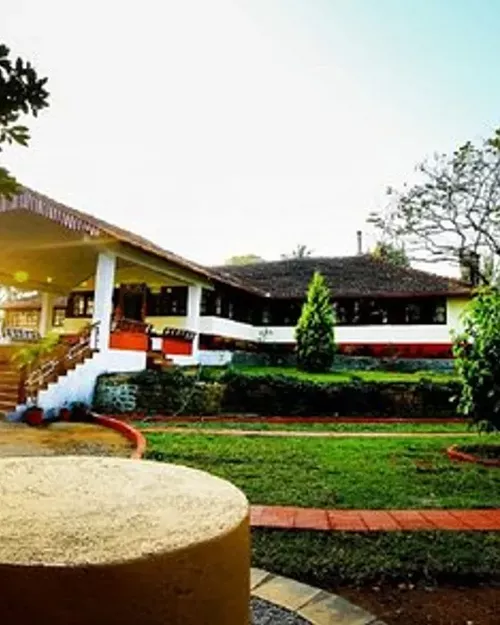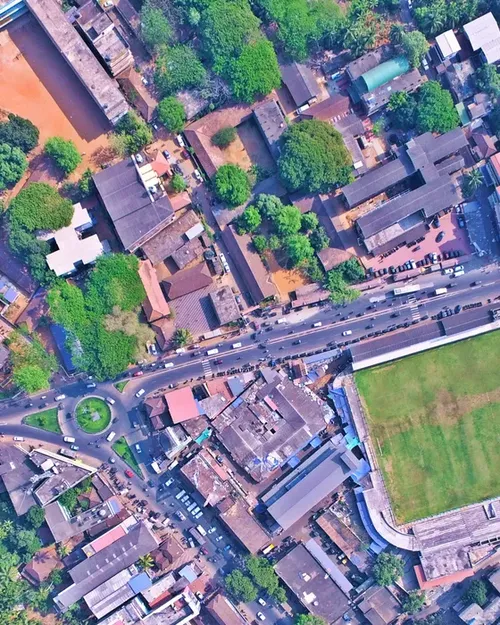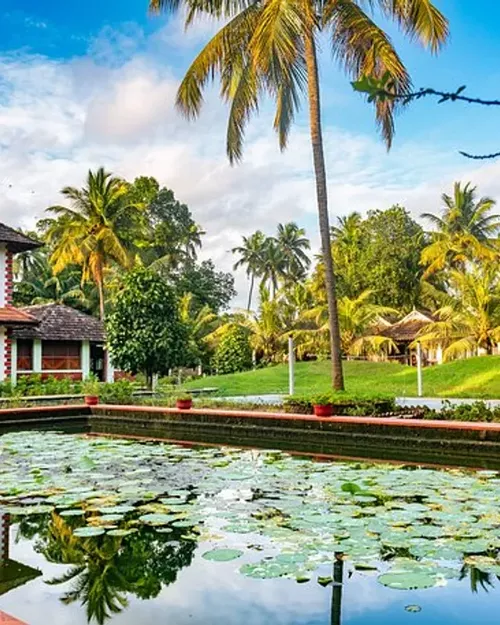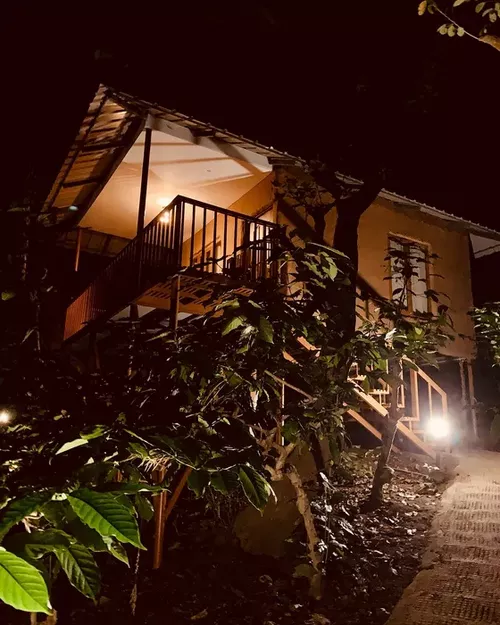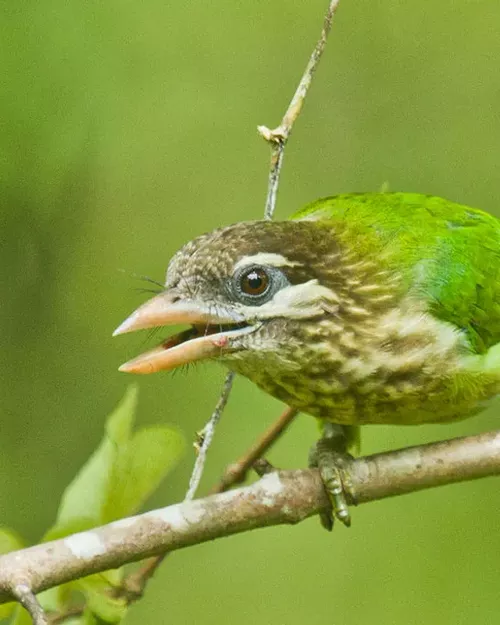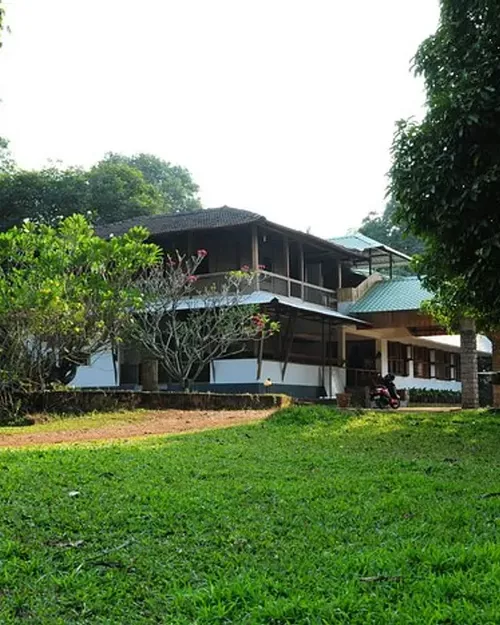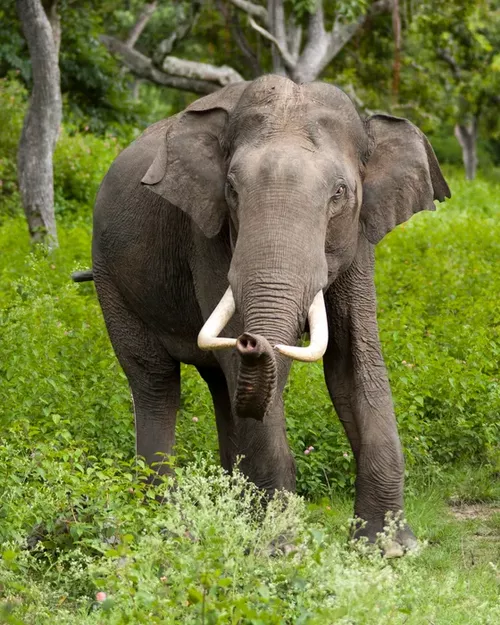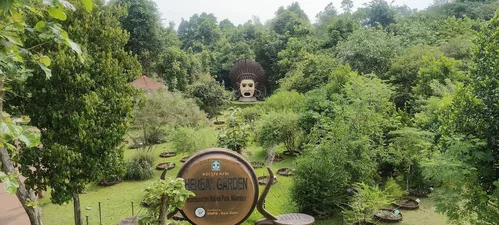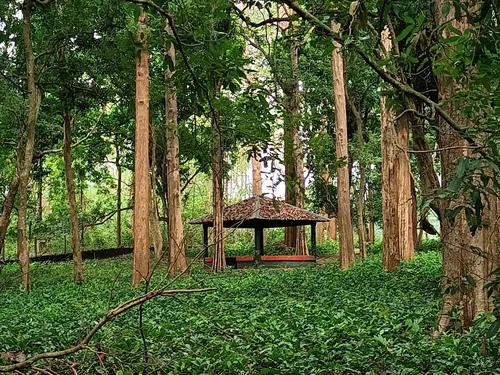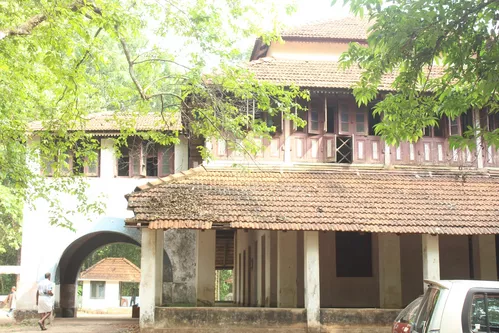Nilambur is popular for
Nilambur in next 3 month
Weather in Nilambur
December in Nilambur is cool with misty mornings and moderate air quality, making it a pleasant time to visit.
Usual trip duration
A 2-3 day trip to Nilambur allows you to explore the serene beauty of its forests, visit the famous Teak Museum, and take leisurely walks along the Chaliyar River. It's a perfect short getaway for nature lovers.
Affordable destination
Ideas To Plan Your Trip
Places To Visit
Places To Eat
Frequently Asked Questions about Nilambur
The best time to visit Nilambur, Kerala, is during the post-monsoon and winter months, from September to March. During this period, the weather is pleasant and ideal for exploring the forests, teak plantations, and other attractions. The temperatures are moderate, making it comfortable for outdoor activities like trekking and sightseeing. Avoid the monsoon season (June to August) due to heavy rainfall and potential flooding, which can restrict travel and activities. The summer months (April and May) can be hot and humid, making exploration less enjoyable. Planning your visit during the cooler months ensures a more comfortable and memorable experience in Nilambur, allowing you to fully appreciate the natural beauty and attractions of the region.
Reaching Nilambur is relatively straightforward, with multiple transportation options available:
Once you arrive in Nilambur, local transport options include auto-rickshaws, taxis, and local buses to get around the town and visit different attractions.
Nilambur is known for its lush greenery, teak plantations, and natural beauty. Here are some must-visit places:
Nilambur offers a range of activities that cater to nature lovers, adventure enthusiasts, and those interested in cultural experiences. Here are some activities you can enjoy:
- Trekking and Hiking: Explore the rainforests and hilly terrains by going on treks. Places like Nedumkayam offer guided treks.
- Nature Walks: Take leisurely walks through the teak plantations, such as Conolly's Plot, and enjoy the serene environment.
- Visit Waterfalls: Spend time at Adyanpara Waterfalls, where you can relax, swim, and enjoy the natural beauty.
- Museum Visits: Learn about teak at the Teak Museum and explore exhibits on forestry and local history.
- Explore Cultural Sites: Visit the Nilambur Kovilakams to see traditional architecture and learn about the region's heritage.
- Photography: Capture the scenic landscapes, wildlife, and cultural sites. The lush greenery and natural beauty provide ample opportunities for stunning photographs.
- Bird Watching: The region is rich in avian biodiversity, making it a great spot for bird watching.
Nilambur serves as a great base to explore nearby attractions in Kerala and Tamil Nadu. Here are some popular destinations:
Nilambur offers a range of accommodation options to suit various budgets and preferences. Here's a breakdown of the types of accommodations available:
- Budget Hotels and Guesthouses: These are economical options that offer basic amenities and comfortable stays. They are suitable for budget travelers looking for a simple and clean place to stay.
- Mid-Range Hotels: These hotels provide a balance of comfort and affordability. They typically offer additional amenities such as air conditioning, in-house dining, and room service.
- Resorts: Located amidst the natural beauty of Nilambur, resorts offer a more luxurious experience with amenities such as swimming pools, spa services, and recreational activities. They are ideal for families and travelers looking for a relaxing getaway.
- Home Stays: These offer a more personalized experience, where you stay with local families and get a taste of Kerala hospitality. Home stays often provide home-cooked meals and insights into local culture.
It's advisable to book your accommodation in advance, especially during peak tourist season, to ensure availability and secure the best rates.
While Nilambur is not primarily known as a shopping destination, you can still find local products and souvenirs to take back home. The shopping options are centered around local markets and small shops. Here's what you can typically find:
- Local Handicrafts: You can find locally made handicrafts, including wooden items and artifacts. These are available in small shops around the town center.
- Spices: Kerala is famous for its spices, and you can purchase fresh spices from local markets in Nilambur.
- Teak Products: Given Nilambur's association with teak, you may find items made from teak wood, though these can be limited.
- Clothing and Textiles: There are small shops selling clothing and textiles, where you can find traditional Kerala attire and fabrics.
- Souvenirs: Look for small souvenirs that represent the local culture and attractions, such as miniature teak logs or crafts depicting local scenes.
For a more extensive shopping experience, you might consider visiting nearby cities like Malappuram or Calicut, where you can find a wider variety of products and shopping centers.
Nilambur offers a variety of dining options where you can savor local Kerala cuisine. While it may not have high-end restaurants, the local eateries and smaller restaurants provide authentic and delicious food. Here are some options:
- Local Eateries: Small restaurants and eateries around Nilambur serve traditional Kerala dishes such as rice with fish curry, sambar, and other vegetable curries.
- Kerala Cuisine: Look for dishes like Appam with stew, Puttu and Kadala Curry, and Idiyappam. These are typical breakfast items but can be found throughout the day.
- Seafood: Given its proximity to coastal areas, some restaurants may offer fresh seafood dishes.
- Tea Stalls: Enjoy a cup of tea and local snacks at the numerous tea stalls in the town.
When exploring Nilambur, try the local delicacies and enjoy the flavors of Kerala. Don't hesitate to try the food at smaller establishments, as they often offer the most authentic culinary experiences.
Yes, Nilambur is generally considered a family-friendly destination. It offers a peaceful environment, natural attractions, and activities suitable for all age groups. Here’s why it's a good choice for families:
- Safe and Peaceful Environment: Nilambur is a relatively quiet and safe town, making it ideal for families seeking a relaxed vacation.
- Educational Attractions: The Teak Museum and Conolly's Plot offer educational experiences for children and adults alike. Learning about teak cultivation and forestry can be both informative and engaging.
- Outdoor Activities: Nature walks, visits to waterfalls, and picnics in lush green surroundings provide opportunities for outdoor fun and family bonding.
- Accommodation Options: You can find family-friendly accommodations, including resorts and home stays, that offer amenities and services suitable for families.
While Nilambur may not have large amusement parks or extensive entertainment options, its natural beauty and serene atmosphere make it a great place for families to reconnect and enjoy quality time together.
Nilambur is renowned for its teak plantations, particularly the Conolly's Plot, which is one of the oldest teak plantations in the world. Several factors make the teak in Nilambur unique:
- Historical Significance: Conolly's Plot, established in the mid-19th century, has a rich history and played a crucial role in the development of teak cultivation in the region.
- High-Quality Teak: The teak grown in Nilambur is known for its superior quality, durability, and aesthetic appeal. The climate and soil conditions contribute to its excellent properties.
- Sustainable Forestry Practices: The region has a long tradition of sustainable forestry management, ensuring the conservation of teak forests for future generations.
- Teak Museum: The presence of the Teak Museum in Nilambur further highlights the importance of teak in the region. The museum provides comprehensive information about teak, its uses, and its impact on the local economy and culture.
The combination of historical significance, high-quality teak, sustainable practices, and educational resources makes Nilambur a unique destination for those interested in forestry and natural resources.
Nilambur offers a rich tapestry of cultural experiences, providing visitors with a glimpse into the traditions and heritage of Kerala. Here are some cultural aspects you can expect to encounter:
- Nilambur Kovilakams: These traditional royal residences showcase the architectural style of Kerala and provide insights into the region's royal history.
- Local Festivals: Nilambur celebrates various local festivals that are vibrant and colorful. Participating in or witnessing these festivals offers a chance to experience the local traditions and customs.
- Traditional Art Forms: Kerala is known for its classical art forms like Kathakali and Theyyam. While Nilambur may not have regular performances, you might find opportunities to witness these art forms in nearby cultural centers or during festivals.
- Cuisine: Sampling the local cuisine is a cultural experience in itself. Traditional Kerala dishes reflect the region's agricultural produce and culinary techniques.
- Hospitality: The warm hospitality of the locals is an integral part of the cultural experience. Engaging with the community and learning about their way of life can be enriching.
While Nilambur may be less commercialized than some other tourist destinations, it offers an authentic and immersive cultural experience for those willing to explore beyond the natural attractions.
Visiting Adyanpara Waterfalls can be a refreshing and enjoyable experience, but it's essential to keep a few things in mind to ensure safety and convenience:
- Safety First: The rocks around the waterfalls can be slippery, especially during the monsoon season. Wear appropriate footwear with good grip to avoid accidents.
- Respect Nature: Keep the area clean by disposing of waste properly. Avoid littering and disturbing the natural environment.
- Appropriate Clothing: Wear comfortable clothing that is suitable for getting wet. If you plan to swim, bring a change of clothes.
- Supervision: If you are visiting with children, keep a close eye on them, especially near the water.
- Photography: While the waterfalls offer great photo opportunities, be cautious while taking pictures near the edge of the rocks.
- First Aid: It's a good idea to carry a small first aid kit with essentials like band-aids, antiseptic lotion, and pain relievers.
- Best Time to Visit: The best time to visit Adyanpara Waterfalls is during the post-monsoon season (September to March) when the water flow is moderate and the weather is pleasant.
By keeping these points in mind, you can have a safe and enjoyable visit to Adyanpara Waterfalls.




